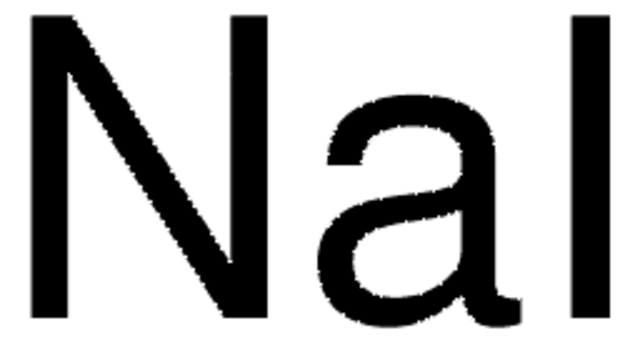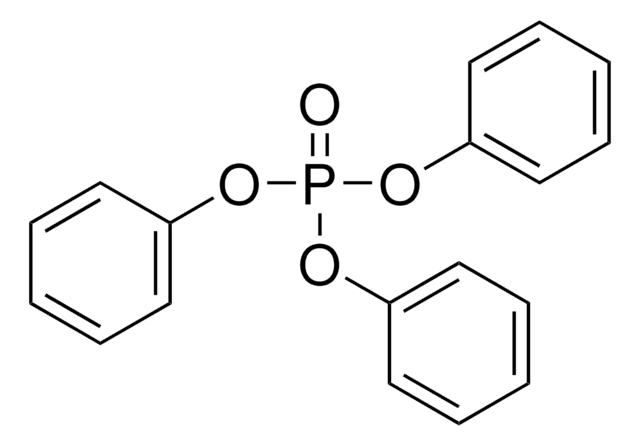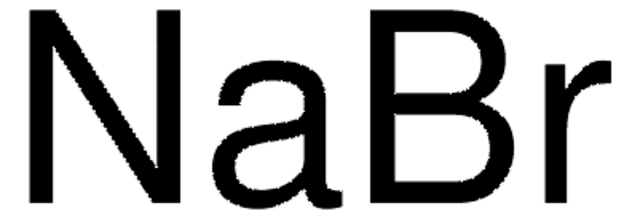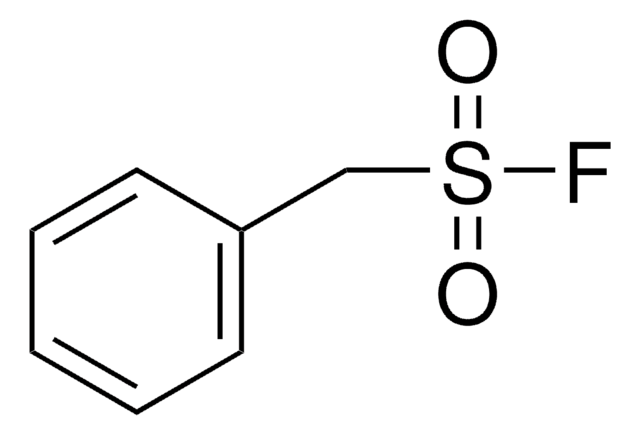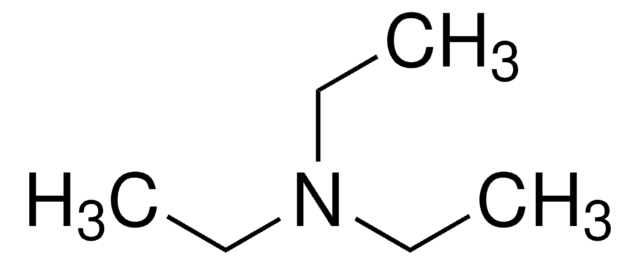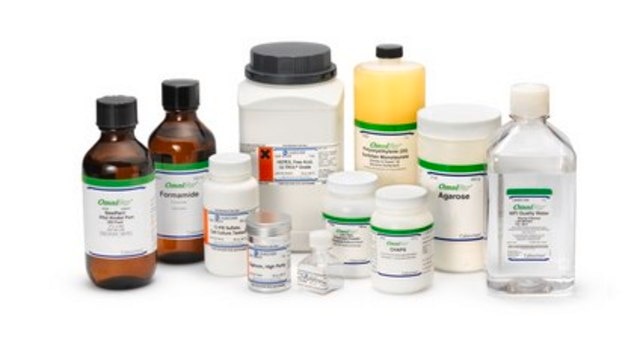793558
Sodium iodide
anhydrous, free-flowing, Redi-Dri™, ReagentPlus®, ≥99%
About This Item
Recommended Products
grade
anhydrous
Quality Level
vapor density
>1 (vs air)
product line
ReagentPlus®
Redi-Dri™
assay
≥99%
form
powder
quality
free-flowing
impurities
≤1.0% water
pH
6-9 (20 °C, 50 g/L)
mp
661 °C (lit.)
SMILES string
[Na+].[I-]
InChI
1S/HI.Na/h1H;/q;+1/p-1
InChI key
FVAUCKIRQBBSSJ-UHFFFAOYSA-M
Looking for similar products? Visit Product Comparison Guide
Related Categories
General description
Application
Legal Information
signalword
Danger
Hazard Classifications
Aquatic Acute 1 - Eye Irrit. 2 - Skin Irrit. 2 - STOT RE 1 Oral
target_organs
Thyroid
Storage Class
6.1C - Combustible, acute toxic Cat.3 / toxic compounds or compounds which causing chronic effects
wgk_germany
WGK 3
flash_point_f
Not applicable
flash_point_c
Not applicable
Choose from one of the most recent versions:
Certificates of Analysis (COA)
Sorry, we don't have COAs for this product available online at this time.
If you need assistance, please contact Customer Support.
Already Own This Product?
Find documentation for the products that you have recently purchased in the Document Library.
Customers Also Viewed
Our team of scientists has experience in all areas of research including Life Science, Material Science, Chemical Synthesis, Chromatography, Analytical and many others.
Contact Technical Service